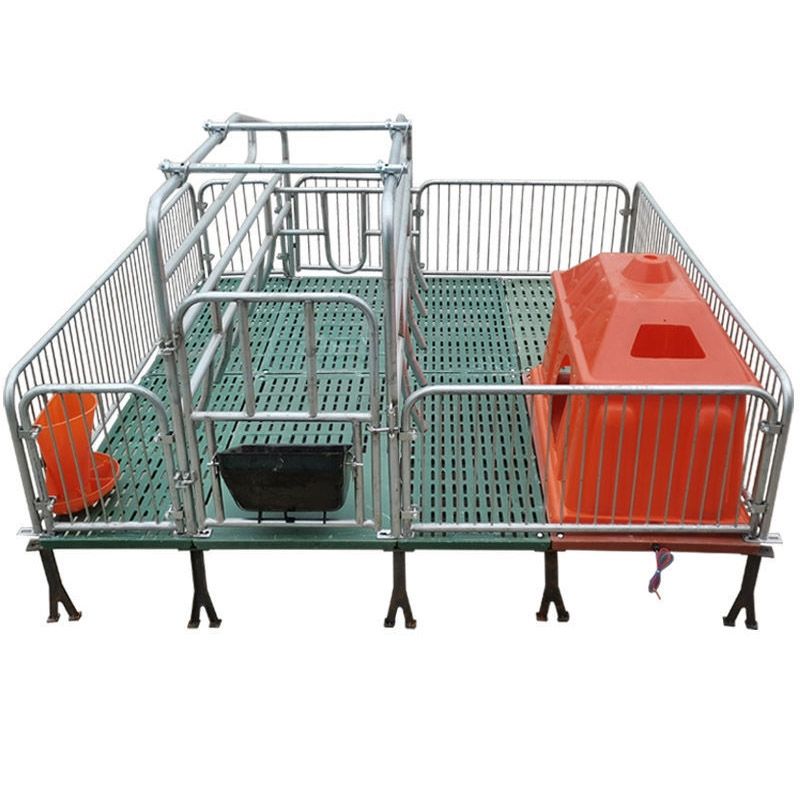Efficient Poultry Housing Solutions for Enhanced Egg Production and Animal Welfare
Dec . 31, 2024 15:09 Back to list
Efficient Poultry Housing Solutions for Enhanced Egg Production and Animal Welfare
The Importance of Poultry Laying Cages in Modern Agriculture
In the global agricultural landscape, the efficiency of poultry farming has become increasingly vital to meet the growing demand for eggs and poultry products. Among the various innovations introduced in this sector, poultry laying cages have emerged as a significant solution to optimize egg production. These cages are not only pivotal for enhancing productivity but also play a crucial role in ensuring the health and welfare of hens.
Poultry laying cages are specifically designed enclosures that house laying hens. They come in various configurations and can be either traditional or modern, with the latter often incorporating automated systems for feeding, watering, and egg collection. The primary advantage of using these cages is that they allow farmers to manage their flocks more effectively. By providing a controlled environment, poultry laying cages help optimize factors such as space, nutrition, and health monitoring, which are essential for maximizing egg production.
One of the key benefits of poultry laying cages is the efficiency they bring to space utilization. Unlike traditional free-range systems, where hens may have more room but often face challenges such as increased disease transmission and lower egg yield, cages enable farmers to house more hens per square foot. This high-density setup facilitates a concentrated production system wherein farmers can cultivate large quantities of eggs without requiring extensive land resources. By maximizing space, poultry laying cages contribute significantly to sustainable agricultural practices.
poultry laying cages

Moreover, poultry laying cages help mitigate health risks associated with poultry farming. In traditional systems, hens are exposed to various environmental stressors and potential predators. However, cages provide a more secure and controlled environment, reducing the likelihood of injuries and diseases. Enhanced sanitary conditions found in modern poultry cages further prevent the spread of infections. These improved health standards lead to better-quality eggs, ultimately benefiting both producers and consumers alike.
Another essential aspect to consider is the welfare of the hens. While there is ongoing debate regarding the ethics of using cages in poultry farming, modern designs have increasingly focused on improving animal welfare. Enriched cages, for example, offer hens more space to move, along with features such as perches, nesting areas, and scratching posts. These modifications aim to reduce stress levels and allow hens to exhibit more natural behaviors, thus enhancing their overall well-being. The shift towards more humane cage designs reflects the industry's response to consumer demands for ethical farming practices.
Furthermore, the economic implications of using poultry laying cages cannot be overlooked. By improving egg production efficiency and reducing health-related costs, farms can significantly increase their profitability. The automation features of modern cages streamline daily operations, allowing farmers to save time and labor costs. Additionally, with the rising global population and the consequent increase in demand for poultry products, poultry laying cages present a vital solution for farmers seeking to scale their operations without breaking the bank.
In conclusion, poultry laying cages represent a cornerstone of modern poultry farming. They optimize egg production, enhance animal welfare, mitigate health risks, and promote economic viability for farmers. As the agriculture sector continues to evolve with increasing demand for sustainable and ethical food sources, poultry laying cages will likely remain integral to the future of egg production. By adopting innovative farming practices rooted in the principles of efficiency and sustainability, the industry can meet both consumer needs and ethical standards, ensuring a productive and responsible approach to poultry farming.
-
Hot Sale 24 & 18 Door Rabbit Cages - Premium Breeding Solutions
NewsJul.25,2025
-
Automatic Feeding Line System Pan Feeder Nipple Drinker - Anping County Yize Metal Products Co., Ltd.
NewsJul.21,2025
-
Automatic Feeding Line System Pan Feeder Nipple Drinker - Anping County Yize Metal Products Co., Ltd.
NewsJul.21,2025
-
Automatic Feeding Line System - Anping Yize | Precision & Nipple
NewsJul.21,2025
-
Automatic Feeding Line System - Anping Yize | Precision & Nipple
NewsJul.21,2025
-
Automatic Feeding Line System-Anping County Yize Metal Products Co., Ltd.|Efficient Feed Distribution&Customized Animal Farming Solutions
NewsJul.21,2025






